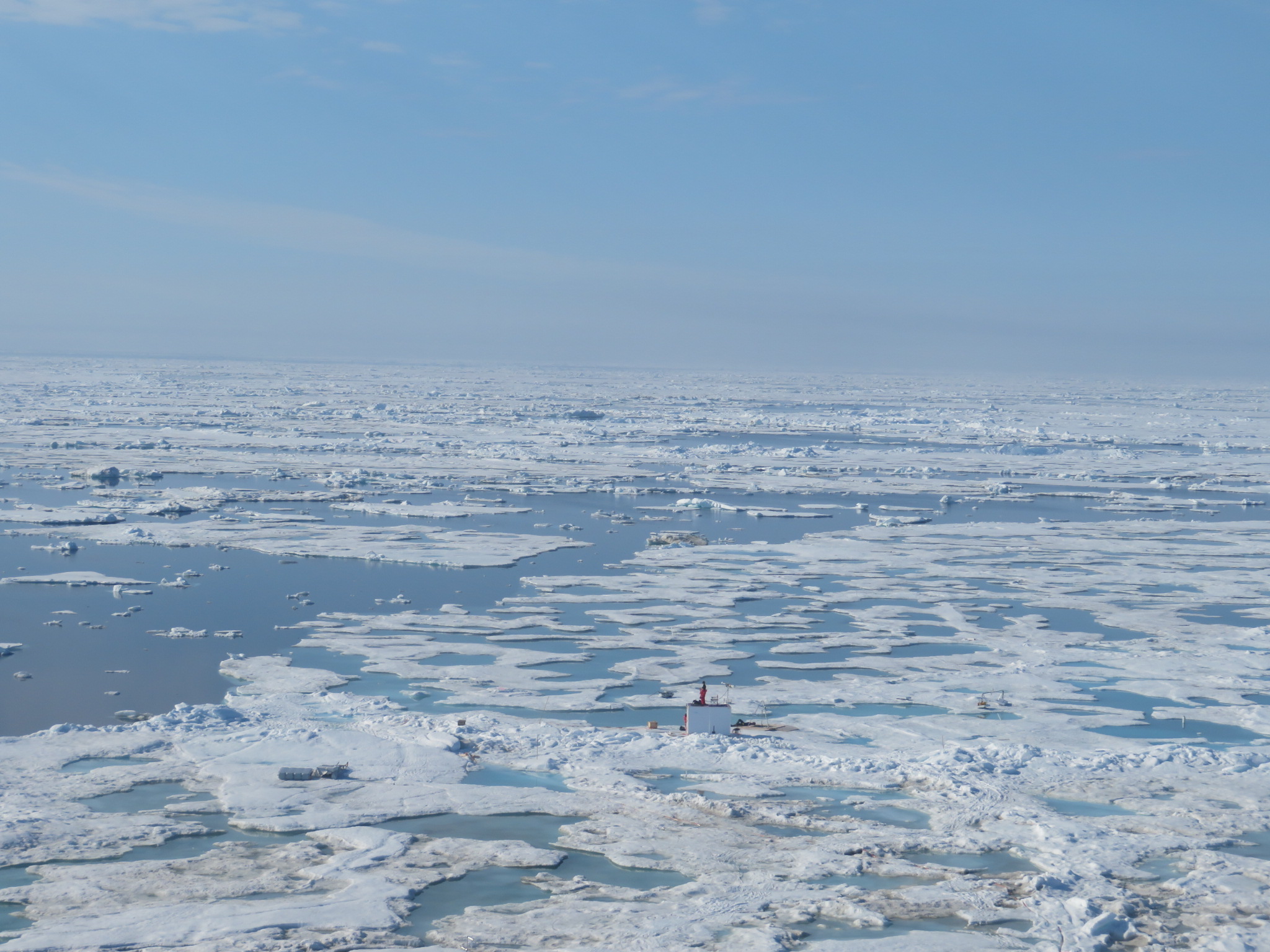by Matthew Shupe, CIRES/NOAA scientist and co-coordinator of MOSAiC
The ice around us has recently been spacious. Lots of open water around. Gaps between floes. And all of the floes move relative to each other. Not far away from our main floe have been others from the MOSAiC timeline: The Old Central Observatory floe, the old “Second Year Ice” sampling area, the old Met Hut, and more. These were all parts of our original installation that are now drifting independently along. So each day when you look out the window it is a different scene, with these companion floes drifting forward and backward relative to us. Sometimes it is just that our floe rotates. One day it rotated a total of 60 degrees. Such movements are hardly noticeable as you stand on the ice itself, but we are constantly measuring our orientation so we can quantify the details. As we drift through the Fram Strait area, the ice pack becomes looser. We are approaching the ice edge and that edge is defined as the transition between where there is ice and where there is no ice. Thus, for this floe to get to the edge, movement is not enough. This floe actually has to melt. It has to go from (still) thick ice to no ice. Dynamics near the ice edge can hasten this process by breaking the floe into smaller pieces that melt faster, but that is only for the areas that experience the additional forces from waves that penetrate into the ice pack. Since waves in Fram Strait are largest in the north-south direction, we are now pretty safe. We are sitting in the middle of a long tongue of ice that extends from the mouth of Fram Strait and down along the east coast of Greenland. Ice is commonly found here. This year the ice extent for this time of year is at a record minimum in general, largely because of extensive ice loss across the Siberian sector of the ice pack. But in our current area, the ice extent, and especially concentration, is actually higher than typical. This is likely a result of the uncharacteristic atmospheric circulation pattern this year, with a stagnant large-scale flow and very high values of the Arctic Oscillation Index through much of the winter. This pattern pushed our drifting MOSAiC expedition across the Arctic faster than we had expected, and in general it pushed much of the ice from the Siberian sector over towards our position now, likely resulting in the denser ice pack we experience here. So we are now flirting with the ice edge, some 40 nautical miles away. But our floe is still fairly robust and thick. Thus, I think we still have some time on this floe and only need to think about packing up our equipment once we see extensive areas of melt ponds that have entirely melted through to the deep ocean, or a big storm that pushes ocean waves into our floe and causes big cracks to form and mechanical breakdown of the floe. I’m hoping these processes don’t take hold for at least a couple more weeks.


